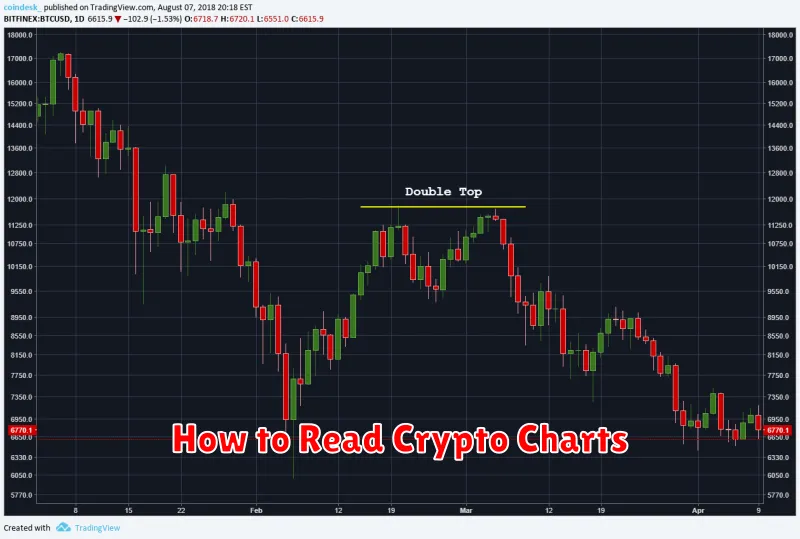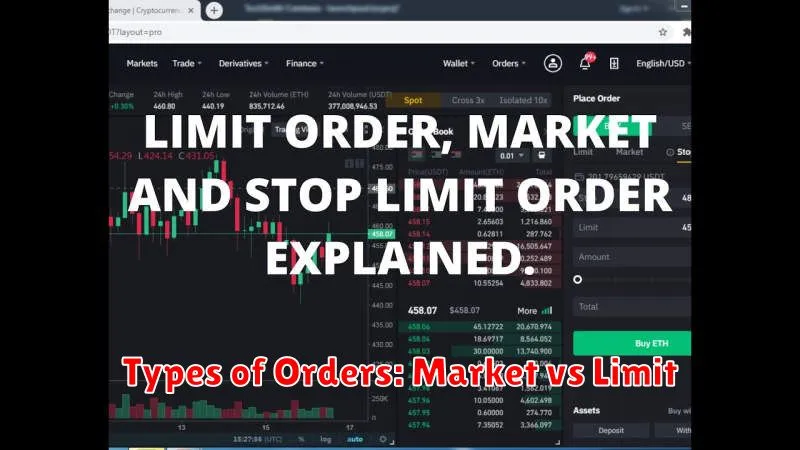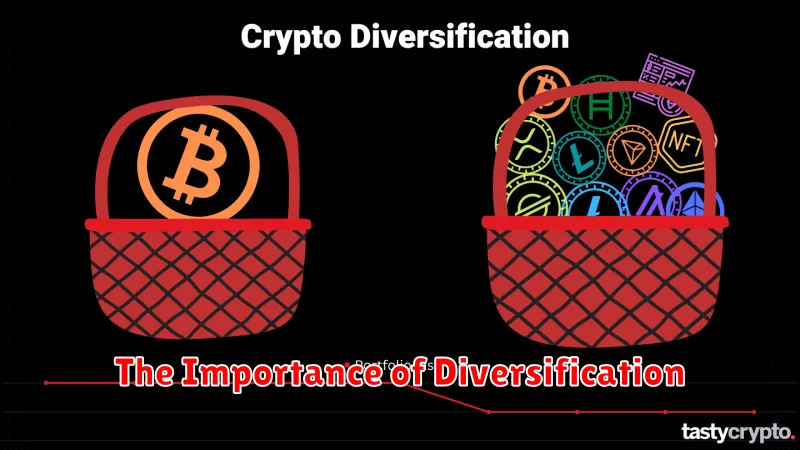Navigating the world of cryptocurrency can feel daunting, especially for beginners. Safe cryptocurrency trading requires knowledge and caution. This comprehensive guide, “How to Trade Crypto Safely: Tips for Beginners,” will equip you with the essential strategies to secure your digital assets and make informed decisions in this volatile yet potentially rewarding market. Learn how to avoid scams, understand risk management, and develop a robust crypto trading strategy to minimize losses and maximize your potential for safe and profitable cryptocurrency trading.
Understanding Crypto Trading Pairs

Crypto trading pairs represent the exchange of one cryptocurrency for another. For example, a BTC/USD pair means you’re trading Bitcoin (BTC) for US dollars (USD). The first cryptocurrency listed is the base currency, while the second is the quote currency, which is used to determine the price of the base currency.
Understanding trading pairs is crucial because the price of a cryptocurrency varies significantly depending on the pair. The same cryptocurrency might have different values against different fiat currencies or other cryptocurrencies. For instance, BTC/USD might show a higher value compared to BTC/EUR due to fluctuations in the exchange rate between the dollar and the euro.
Altcoin pairs (e.g., ETH/BTC, meaning Ethereum against Bitcoin) are also common, reflecting the value of one altcoin relative to a major cryptocurrency like Bitcoin. Analyzing these pairs helps assess the performance of an altcoin independent of its value against fiat currencies.
Choosing the right trading pair depends on your trading strategy and risk tolerance. Some pairs are more volatile than others, leading to higher potential profits but also greater potential losses. Careful research and understanding of market trends are vital before engaging in any crypto trade.
How to Read Crypto Charts

Understanding cryptocurrency charts is crucial for safe and informed trading. Candlestick charts are the most common; each candle represents a specific time period (e.g., 1 hour, 1 day). The body of the candle shows the opening and closing prices, while the wicks (lines extending above and below) indicate the high and low prices during that period. A green candle signifies a price increase, while a red candle shows a decrease.
Moving averages (MAs) are lines that smooth out price fluctuations, helping to identify trends. Common MAs are the simple moving average (SMA) and the exponential moving average (EMA). A crossover, where one MA crosses another, can signal a potential trend change. Support and resistance levels are price points where the price has historically struggled to break through. Support acts as a floor, while resistance acts as a ceiling.
Volume is a crucial indicator showing the amount of cryptocurrency traded during a specific period. High volume confirms price movements, while low volume suggests weak trends. Relative Strength Index (RSI) and MACD (Moving Average Convergence Divergence) are technical indicators that help identify overbought or oversold conditions, potentially suggesting a price reversal. Learning to interpret these indicators requires practice and further research.
Remember, chart analysis alone isn’t sufficient for safe trading. Combine chart analysis with fundamental research, risk management, and a well-defined trading strategy to improve your decision-making and minimize losses.
Types of Orders: Market vs Limit

Understanding order types is crucial for safe and effective cryptocurrency trading. Two primary order types are market orders and limit orders. Each carries different risks and benefits.
A market order executes immediately at the best available price. This is convenient for quick trades but can result in paying a higher price (buying) or receiving a lower price (selling) than desired, especially during volatile market conditions. The speed is the main advantage, but the price is unpredictable.
In contrast, a limit order lets you specify a particular price at which you want to buy or sell. The order will only execute if and when the market reaches your specified price. This allows for better price control, minimizing the risk of unfavorable trades. However, there’s no guarantee your order will fill if the market doesn’t reach your limit. The price control is the main advantage, but the trade might not execute at all.
Choosing between market and limit orders depends on your trading strategy and risk tolerance. For beginners, understanding these differences is a critical step towards safer cryptocurrency trading practices.
Risk Management Strategies
Effective risk management is crucial for safe cryptocurrency trading. Beginners should prioritize strategies that minimize potential losses.
Diversification is key. Don’t put all your eggs in one basket. Invest in a variety of cryptocurrencies to reduce the impact of any single asset’s price fluctuation.
Dollar-cost averaging (DCA) involves investing a fixed amount of money at regular intervals, regardless of price. This strategy mitigates the risk of buying high and selling low.
Setting stop-loss orders is vital. These automatically sell your cryptocurrency when it reaches a predetermined price, limiting potential losses.
Only invest what you can afford to lose. Cryptocurrency trading is inherently risky; never invest funds you need for essential expenses or emergencies.
Thorough research is essential before investing in any cryptocurrency. Understand the project’s fundamentals, team, and market potential.
Avoid emotional trading. Market volatility can trigger impulsive decisions. Stick to your trading plan and avoid making rash choices based on fear or greed.
Regularly review and adjust your portfolio based on market conditions and your risk tolerance. Risk management is an ongoing process, not a one-time event.
Consider using a secure hardware wallet to store your cryptocurrency offline, significantly reducing the risk of hacking or theft.
Stay informed about market trends and news. Keeping up-to-date with industry developments can help you make more informed trading decisions and manage risk more effectively.
Avoiding Crypto Trading Scams

The cryptocurrency market, while offering high potential returns, is also rife with scams. Protecting yourself requires vigilance and a healthy dose of skepticism.
Beware of unrealistic promises. Any investment promising guaranteed high returns or effortless riches is almost certainly a scam. Legitimate investments carry inherent risk.
Verify platforms and individuals. Before investing, thoroughly research any platform or individual offering crypto trading services. Look for reviews and regulatory information. Be wary of unregistered or poorly reviewed platforms.
Secure your accounts. Use strong, unique passwords and enable two-factor authentication (2FA) wherever possible. Never share your private keys or seed phrases with anyone.
Avoid unsolicited investment advice. Be wary of messages promising easy money or urging immediate action. Legitimate investment opportunities don’t typically involve high-pressure sales tactics.
Understand the risks. Cryptocurrency trading is inherently risky. Only invest what you can afford to lose. Diversify your portfolio and avoid putting all your eggs in one basket.
Report suspicious activity. If you encounter a potential scam, report it to the appropriate authorities and warn others about it. Sharing information can help prevent others from falling victim.
By remaining cautious and informed, you can significantly reduce your risk of becoming a victim of a cryptocurrency scam.
The Importance of Diversification

Diversification is a crucial aspect of safe cryptocurrency trading. It involves spreading your investments across various cryptocurrencies and asset classes. This strategy significantly reduces your risk.
Don’t put all your eggs in one basket. Investing in a single cryptocurrency exposes you to extreme volatility and potential loss if that specific coin underperforms. Diversification mitigates this risk by lessening the impact of any single asset’s decline on your overall portfolio.
By diversifying, you can potentially increase your returns while minimizing your potential losses. A well-diversified portfolio balances high-risk, high-reward assets with lower-risk, more stable ones, creating a more robust investment strategy.
Consider your risk tolerance when diversifying. Some investors prefer a more conservative approach with a wider range of assets, while others may opt for a more concentrated portfolio with higher-risk investments. Regardless of your approach, diversification remains a cornerstone of sound crypto trading practices.
Choosing a Secure Exchange

Selecting a secure cryptocurrency exchange is paramount for safe trading. Begin by researching platforms with a proven track record and strong security measures. Look for exchanges that offer two-factor authentication (2FA), cold storage for a significant portion of their assets, and robust security protocols to protect against hacking attempts.
Consider the exchange’s regulatory compliance. Reputable exchanges often operate under strict regulatory frameworks, providing an additional layer of security and user protection. Reading independent reviews and user testimonials can offer valuable insights into an exchange’s security practices and overall reliability.
Never compromise on security. Choose an exchange that prioritizes the safety of user funds and actively works to prevent fraud. Be wary of exchanges with a history of security breaches or questionable practices. Your diligence in choosing a secure exchange is a crucial step in mitigating risks associated with cryptocurrency trading.

